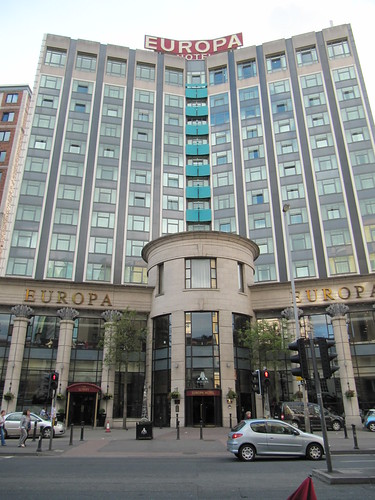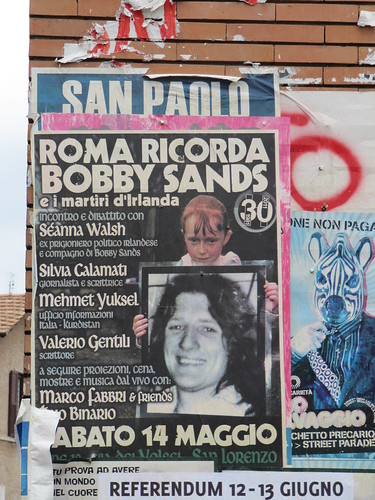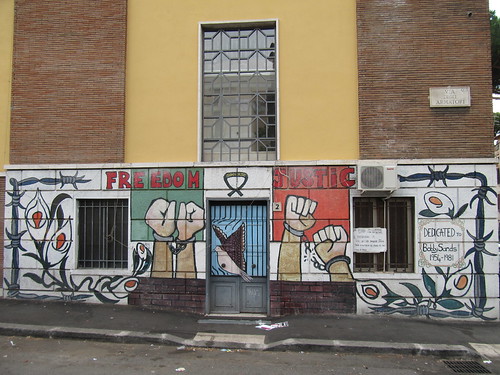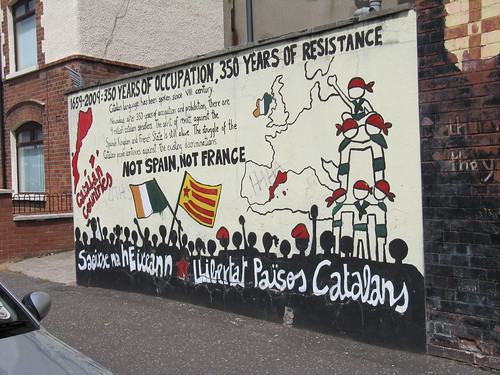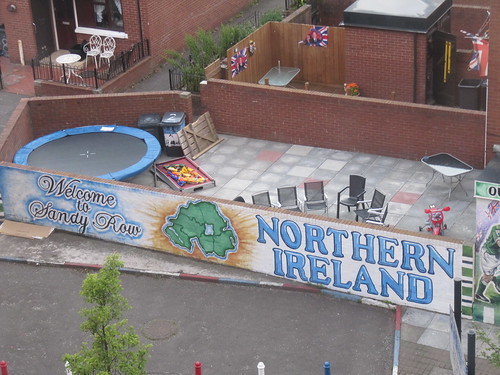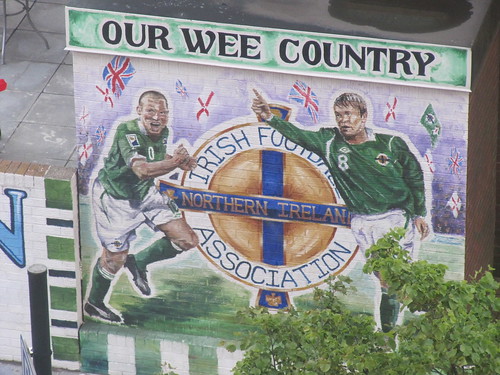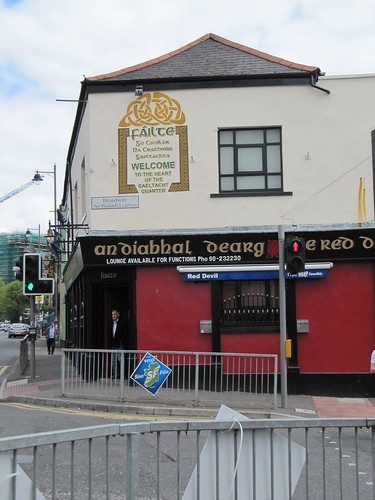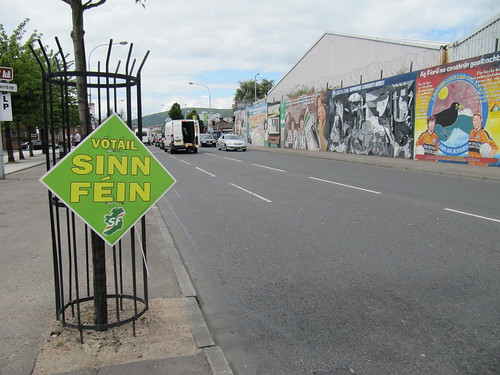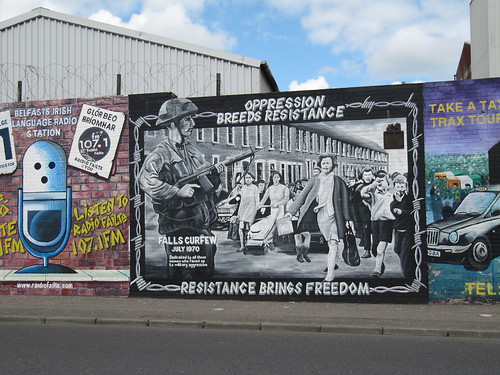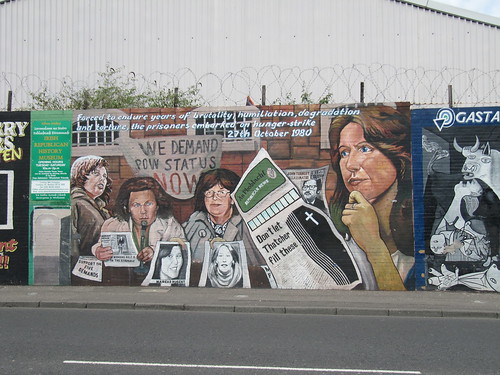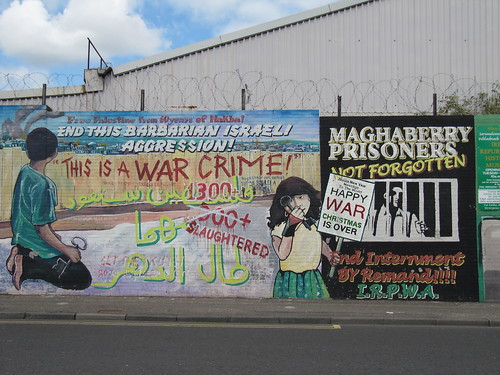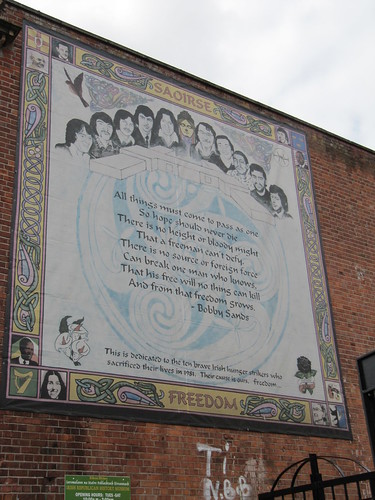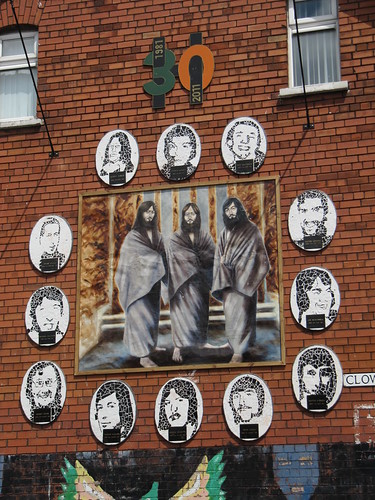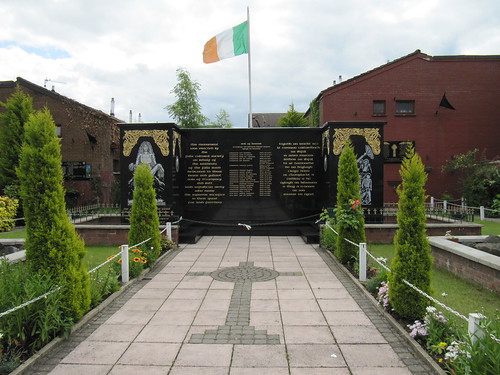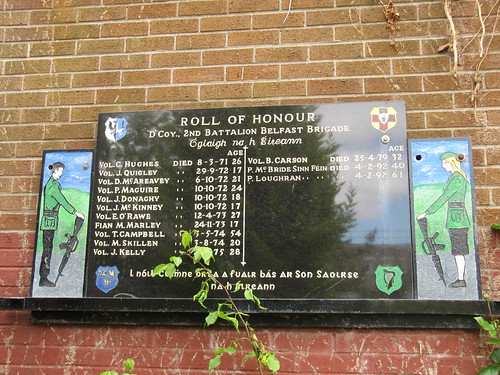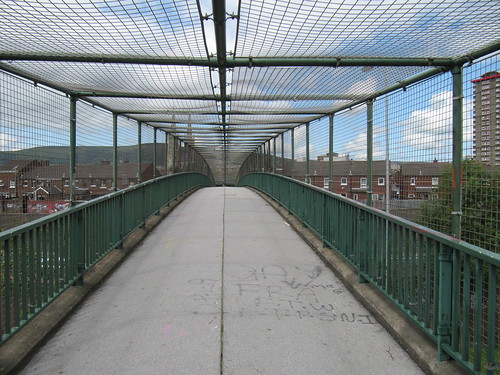Coming on the heels of my last entry, I’m a little hesitant to even attempt this posting. I still maintain that Belfast is a beautiful place, and I don’t want to give the impression that a great deal of instability remains. Furthermore, the subject of the Troubles is so nuanced and multi-layered that it could never be encapsulated in two hours of me wandering about and snapping photographs of notorious areas. But I still wanted to have a look around, and the resulting photographs here reveal the daily reminders of this city’s emotionally charged past…and present to some extent.
Since I am not a part of this history, I feel no inclination to sympathize with either side of the peace line (and nor do I feel I should). Even though I’m a foreigner, I do a feel a bit close to this history after witnessing some of the more positive developments at the end of the twentieth century.
While at Trinity I listened on the radio as the midnight deadline passed and we heard that both sides had struck what was soon known as the Good Friday Agreement. I saw the Agreement’s broker, Senator George Mitchell, speak at University College Dublin shortly afterward as he was greeted by the thundering applause of a couple hundred college students. Later that year, my typical American reaction of exult was cynically ribbed by my Irish employers when we all heard that John Hume and David Trimble being jointly awarded the Nobel Peace Prize. In my mind, I had defaulted to the “And they all lived happily ever after” conclusion; to the Irish, it was more of a “This is all well and good, but we’ll just wait and see” kind of reaction.
Interestingly enough, my exposure to Belfast began a week before I even arrived. I was walking around a working class (and very left-leaning) neighborhood in Rome, and I stumbled across this poster:
So I have just gone through and posted all of the photos that will be included in this entry. Even before attempting to add commentary, I can already tell you that my sentiment upon seeing all of this again remains the same- there is too much. I imagine that you will feel a bit like I did when I finally had my fill yesterday, and hopped into a black cab to return to back city center (and back to relative normalcy).
What you will see is taken largely from Sandy Row (Protestant loyalist) and the Falls Road (Catholic republican) working class neighborhoods. All of the artwork that I encountered, mind you, is not centered around the Irish problem- there is an international wall, for example that recognizes the work of other “freedom fighters” around the world:

“Whatever You Say,
Say Nothing”
-Seamus Heaney 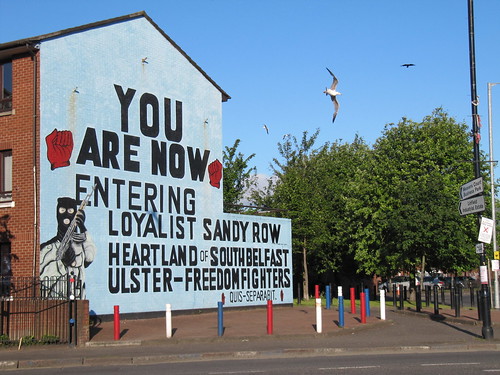
I.
I’m writing just after an encounter
With an English journalist in search of ‘views
On the Irish thing’. I’m back in winter
Quarters where bad news is no longer news,
Where media-men and stringers sniff and point,
Where zoom lenses, recorders and coiled leads
Litter the hotels. The times are out of joint
But I incline as much to rosary beads
As to the jottings and analyses
Of politicians and newspapermen
Who’ve scribbled down the long campaign from gas
And protest to gelignite and Sten,
Who proved upon their pulses ‘escalate’,
‘Backlash’ and ‘crack down’, ‘the provisional wing’,
‘Polarization’ and ‘long-standing hate’.
Yet I live here, I live here too, I sing,
On the high wires of first wireless reports,
Sucking the fake taste, the stony flavours
Of those sanctioned, old, elaborate retorts:
‘Where’s it going to end?’ ‘It’s getting worse.’
‘They’re murderers.’ ‘Internment, understandably …’
The ‘voice of sanity’ is getting hoarse.
III.
“Religion’s never mentioned here”, of course.
“You know them by their eyes,” and hold your tongue.
“One side’s as bad as the other,” never worse.
Christ, it’s near time that some small leak was sprung
In the great dykes the Dutchman made
To dam the dangerous tide that followed Seamus.
Yet for all this art and sedentary trade
I am incapable. The famous
Northern reticence, the tight gag of place
And times: yes, yes. Of the “wee six” I sing
Where to be saved you only must save face
And whatever you say, you say nothing.
Smoke-signals are loud-mouthed compared with us:
Manoeuvrings to find out name and school,
Subtle discrimination by addresses
With hardly an exception to the rule
That Norman, Ken and Sidney signalled Prod
And Seamus (call me Sean) was sure-fire Pape.
O land of password, handgrip, wink and nod,
Of open minds as open as a trap,
Where tongues lie coiled, as under flames lie wicks,
Where half of us, as in a wooden horse
Were cabin’d and confined like wily Greeks,
Besieged within the siege, whispering morse
IV.
This morning from a dewy motorway
I saw the new camp for the internees:
A bomb had left a crater of fresh clay
In the roadside, and over in the trees
Machine-gun posts defined a real stockade.
There was that white mist you get on a low ground
And it was déjà-vu, some film made
Of Stalag 17, a bad dream with no sound.
Is there a life before death? That’s chalked up
In Ballymurphy. Competence with pain,
Coherent miseries, a bite and sup,
We hug our little destiny again.
But it seems as though the people in these parts are long since over the realities of their neighborhoods, and they are all just getting on with their lives. As usual I felt quite welcome, and people everywhere were exceedingly kind. I believe I got a colder reception from two little Irish boys back in Dublin as they asked where I was from and told me they didn’t care about Americans nuclear bombs. Ahh the little eejits….
